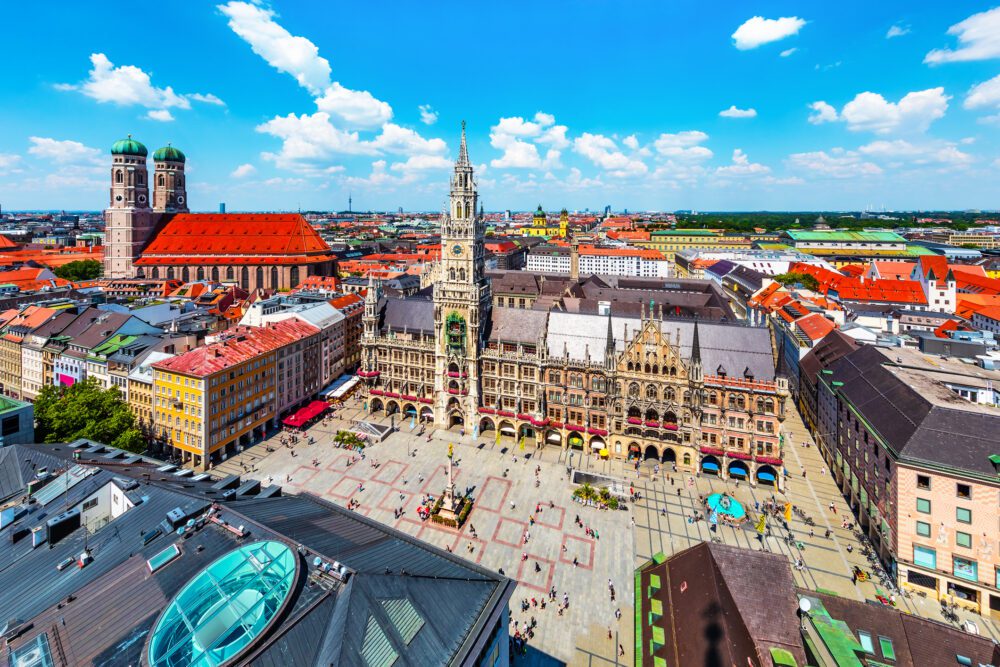
Introduction
Nestled in the heart of Bavaria, Munich stands as a vibrant metropolis that effortlessly blends rich history with modern charm. Known for its stunning architecture, lively beer gardens, and cultural festivities, Munich offers visitors a captivating glimpse into German tradition and heritage. From its iconic landmarks like the Marienplatz and Neuschwanstein Castle to its bustling markets and world-renowned breweries, there’s no shortage of memorable experiences awaiting travellers in this enchanting city.
With a history dating back over 850 years, Munich boasts a wealth of fascinating stories and landmarks to explore. Once the capital of the Kingdom of Bavaria, Munich flourished under the reign of the Wittelsbach dynasty and has since evolved into a dynamic cultural hub. Today, it is celebrated for its thriving arts scene, including prestigious museums like the Alte Pinakothek and the Deutsches Museum, as well as its annual Oktoberfest, the world’s largest folk festival. Whether savouring a stein of beer in a historic beer hall, admiring the intricate details of Gothic architecture, or strolling through lush green parks, visitors to Munich are sure to be enchanted by its unique blend of old-world charm and modern vitality.
Table of Contents
Map of the Best Things to Do in Munich
Marienplatz

At the heart of Munich lies Marienplatz, a bustling square steeped in history and brimming with energy. Dating back to the 12th century, Marienplatz has served as the city’s central hub for centuries, witnessing everything from medieval markets to modern-day festivals. Dominating the square is the magnificent New Town Hall, or Neues Rathaus, with its iconic Glockenspiel clock tower that comes alive with colourful figurines and chimes multiple times a day. Visitors can marvel at the intricate Gothic architecture of the Town Hall facade before venturing inside to explore the grand halls and chambers adorned with ornate frescoes and sculptures.
To fully experience Marienplatz, arrive early in the morning to beat the crowds and enjoy the square’s bustling ambience at a leisurely pace. Take time to explore the surrounding streets, where you’ll find an array of charming cafes, boutiques, and historic landmarks waiting to be discovered. For the best view of the Glockenspiel performance, stake out a spot in front of the Town Hall at least 15 minutes before the show begins. Afterwards, climb to the top of the Town Hall tower for panoramic views of Munich’s skyline, including the majestic Alps on a clear day.
St Peter’s Church
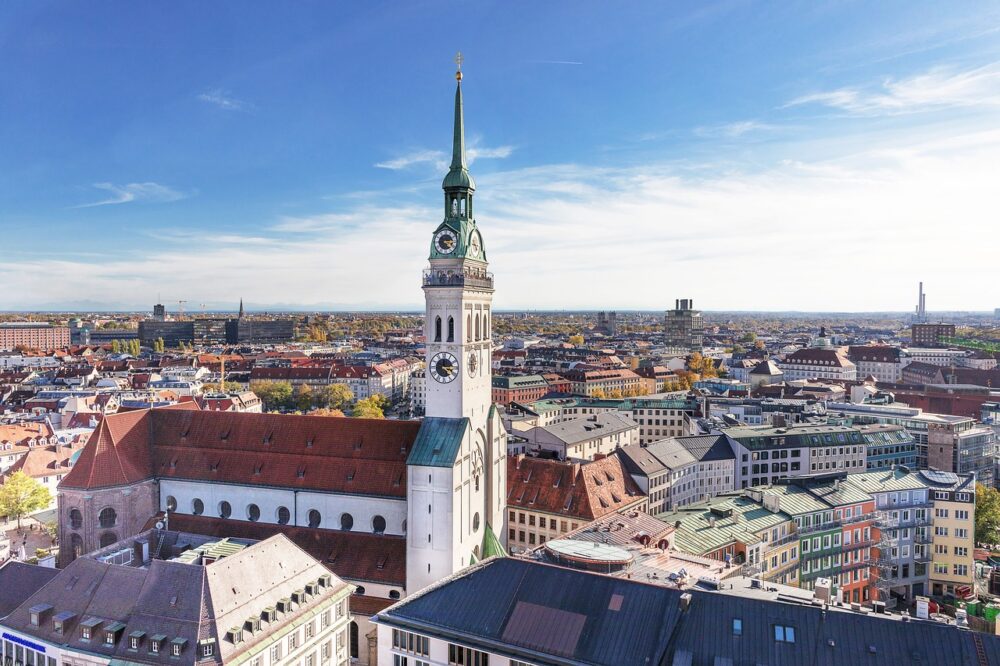
The Theatinerkirche, or Theatine Church, stands as a magnificent example of Italian Baroque architecture in the heart of Munich. Commissioned by Elector Ferdinand Maria and his wife Henriette Adelaide of Savoy in the 17th century, the church was intended to fulfil a vow made by the couple to give thanks for the birth of their long-awaited heir. Designed by Italian architect Agostino Barelli, the Theatinerkirche features a striking facade adorned with columns, statues, and elaborate stucco decorations, while the interior is characterized by its grandeur and opulence. Visitors to the church can admire the exquisite frescoes, gilded altars, and intricately carved marble sculptures that adorn its halls, as well as the magnificent dome that rises high above the nave.
Consider joining one of the guided tours offered by the church, where knowledgeable guides can provide insights into its architecture, artwork, and religious significance. Be sure to check the church’s opening hours and any special events or services that may be taking place during your visit. After exploring the Theatinerkirche, take time to wander through the surrounding area, where you’ll find a wealth of cultural attractions, including the nearby Residenz Palace and Hofgarten.
Viktualienmarkt
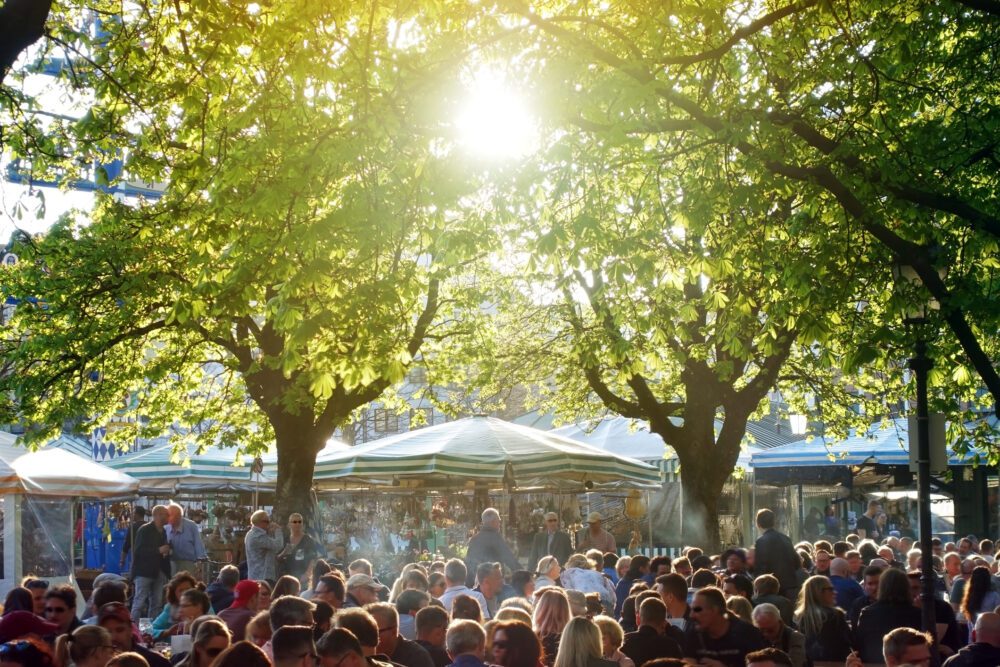
Located in the heart of Munich, Viktualienmarkt is a bustling open-air market that has been a vibrant centrepiece of the city’s culinary scene for over two centuries. Dating back to 1807, when it was established as a food market to supply the city’s residents with fresh produce and local delicacies, Viktualienmarkt has since evolved into a thriving marketplace where locals and visitors alike gather to sample Bavaria’s finest foods. Today, the market boasts over 140 stalls offering everything from fresh fruits and vegetables to artisanal cheeses, meats, and baked goods. Wander through the colourful aisles and take in the sights, sounds, and smells of this bustling market, where vendors proudly display their wares and eager shoppers haggle over the best deals.
Arrive early in the morning to beat the crowds and enjoy the market at its liveliest. Be sure to bring cash, as many vendors may not accept credit cards, and don’t hesitate to sample the array of local specialities on offer, from hearty Bavarian sausages to freshly baked pretzels. For a true taste of Bavarian cuisine, stop by one of the market’s many food stalls or beer gardens, where you can indulge in a traditional Bavarian breakfast of weißwurst (white sausage) served with sweet mustard and a freshly baked pretzel. And don’t forget to pick up some souvenirs to take home with you, whether it’s a jar of locally produced honey or a bottle of Bavarian beer to enjoy later.
Munich Residenz Palace
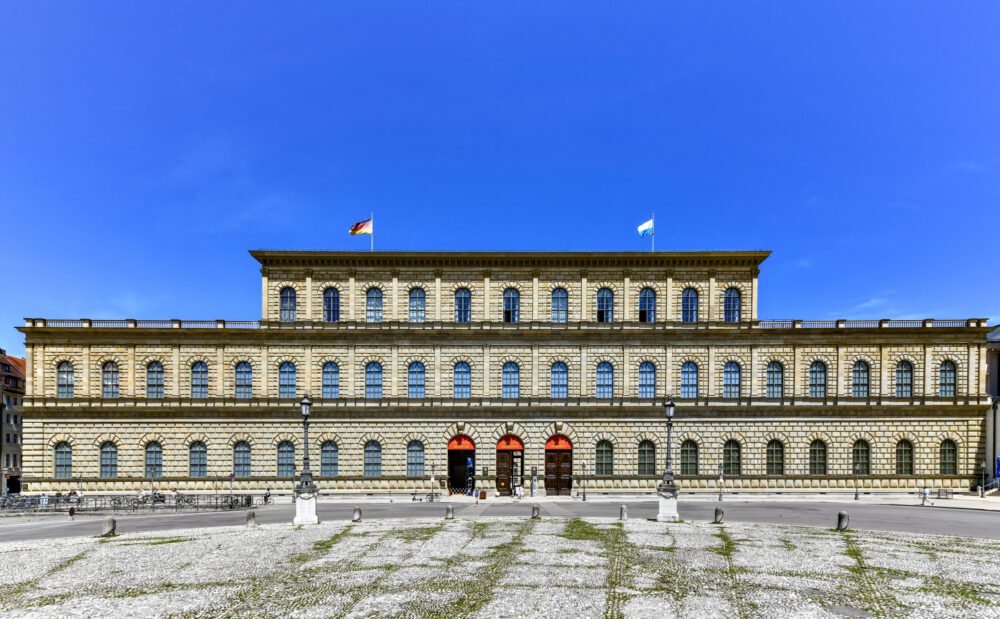
The Residenz Palace, a magnificent architectural gem nestled in the heart of Munich, offers a captivating glimpse into Bavaria’s regal past and artistic legacy. Constructed in the 16th century as the royal seat of the Wittelsbach dynasty, the palace served as the residence of Bavarian rulers for over 400 years, evolving into a sprawling complex of opulent chambers, grand halls, and lush gardens. Today, visitors can explore the palace’s exquisite interiors, which showcase a stunning array of architectural styles, from lavish Rococo salons to majestic Baroque galleries adorned with intricate stucco work and ornate furnishings. Highlights of the palace include the Antiquarium, one of the oldest Renaissance halls in Europe, and the breathtaking Court Chapel, where visitors can marvel at the intricate frescoes and gilded altarpieces that adorn the sacred space.
Consider purchasing a combination ticket that includes access to the palace interiors as well as the Treasury and Cuvilliés Theatre, allowing you to explore the highlights of the complex at your own pace. Be sure to join one of the guided tours offered by knowledgeable docents, who can provide fascinating insights into the history and significance of the palace. After touring the interiors, take time to wander through the palace gardens, where you can admire the manicured lawns, ornamental fountains, and sculpted hedges that surround the palace grounds. And for a taste of Bavarian culture, don’t miss the opportunity to attend a classical music concert or opera performance at the palace’s renowned Hercules Hall, where you can experience the grandeur and elegance of Bavarian court life firsthand.
English Garden and Eisbach Wave
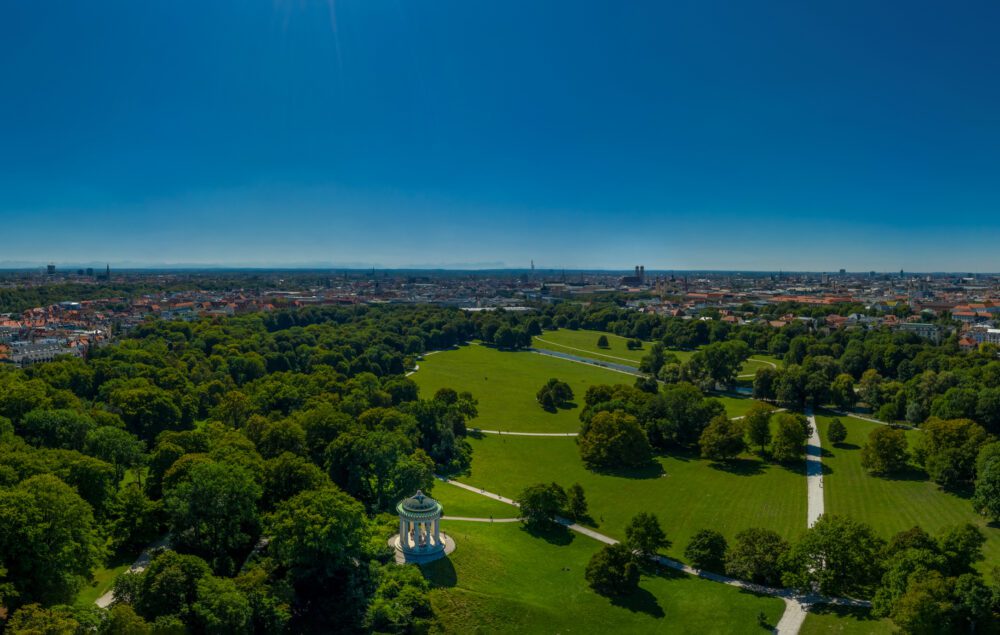
Stretching over 900 acres in the heart of Munich, the English Garden, or Englischer Garten, is a sprawling oasis of greenery and tranquillity beloved by locals and visitors alike. Created in the late 18th century by renowned landscape architect Friedrich Ludwig von Sckell, the park was inspired by the pastoral landscapes of England and designed to provide a scenic retreat for Munich’s residents. Today, the English Garden offers a plethora of attractions, from meandering pathways and lush meadows to picturesque bridges and tranquil waterways. One of the park’s most iconic features is the Eisbach River, where brave surfers can be seen riding the standing wave that forms beneath the iconic bridge near the Haus der Kunst.
To fully explore the English Garden, rent a bike or lace up your walking shoes and embark on a leisurely journey through its scenic pathways and hidden corners. Be sure to visit the Chinese Tower beer garden, a beloved local institution where you can enjoy a refreshing beer and traditional Bavarian fare amidst the serene beauty of the park. For a unique cultural experience, don’t miss the chance to catch a classical music concert at the Monopteros, a picturesque Greek-style temple that offers breathtaking views of the surrounding parklands. And if you’re feeling adventurous, why not take a dip in the tranquil waters of the Kleinhesseloher See, a scenic lake located in the heart of the English Garden?
Hofbräuhaus
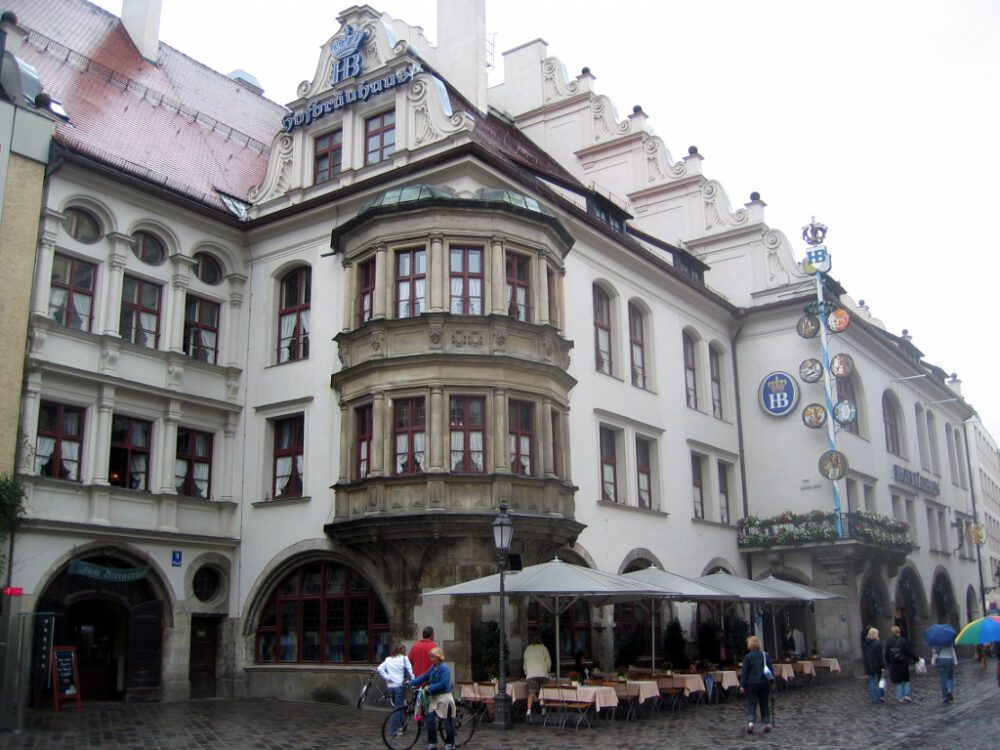
No visit to Munich is complete without a stop at the legendary Hofbräuhaus, a historic beer hall steeped in Bavarian tradition and folklore. Founded in 1589 by Duke Wilhelm V as a royal brewery, the Hofbräuhaus has since evolved into one of the world’s most famous beer halls, renowned for its lively atmosphere, hearty cuisine, and, of course, its signature brews. Step into the cavernous halls adorned with ornate woodwork and historic memorabilia, and you’ll find yourself transported back in time to a bygone era of Bavarian revelry and camaraderie. Whether you’re sipping on a stein of Hofbräu beer, tapping your feet to the sounds of live oompah bands, or feasting on traditional Bavarian dishes like schnitzel and sauerkraut, the Hofbräuhaus offers an authentic taste of Munich’s rich culinary and cultural heritage.
I recommend arriving early to secure a table in one of the bustling beer halls, especially during peak hours and on weekends. Be prepared to share tables with fellow revellers, as communal seating is a cherished tradition at the beer hall. Don’t miss the opportunity to join in the lively atmosphere by singing along to classic Bavarian drinking songs and raising your stein in a hearty “Prost!” (cheers) with newfound friends. For a truly unforgettable experience, consider booking a brewery tour to learn about the centuries-old brewing techniques and traditions that have made Hofbräu beer a beloved staple of Bavarian culture.
Deutsches Museum
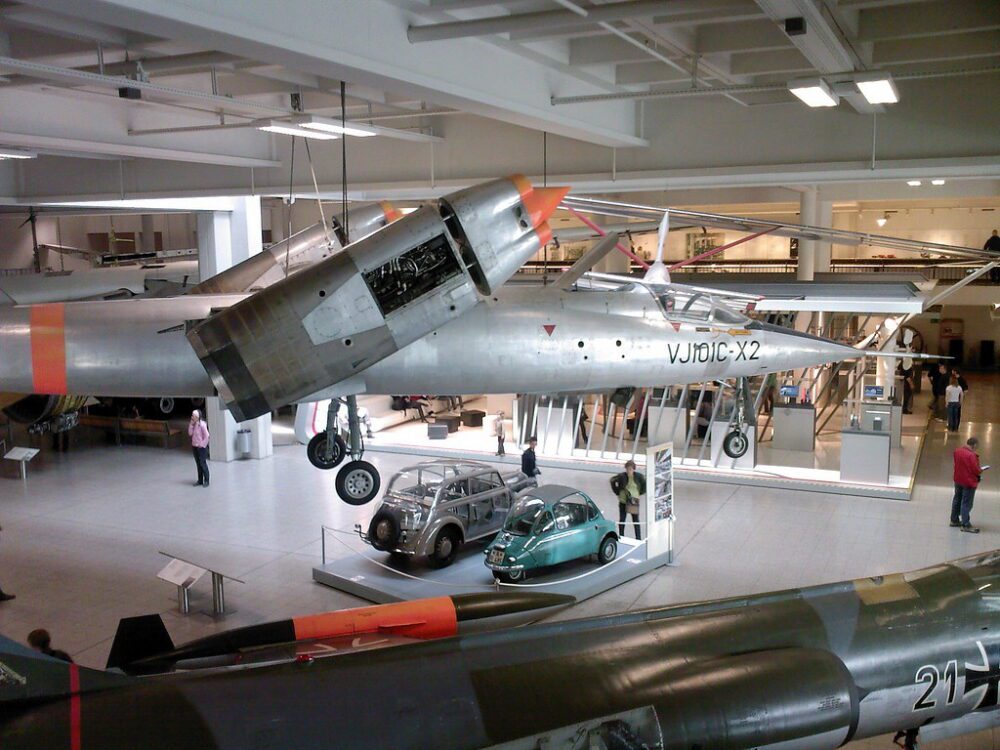
The Deutsches Museum, located on Museum Island in Munich, is one of the world’s largest and most renowned science and technology museums. Founded in 1903 by engineer Oskar von Miller, the museum’s mission was to showcase the achievements and advancements of German science and technology. Today, the museum boasts an extensive collection spanning a wide range of disciplines, including physics, astronomy, aerospace, and telecommunications. Visitors to the Deutsches Museum can explore interactive exhibits, hands-on experiments, and immersive displays that bring the wonders of science and technology to life.
I recommend spending several hours exploring its vast collection and interactive exhibits. Consider starting your visit on the lower floors, where you’ll find exhibits on topics such as energy, transportation, and mechanics. Be sure to check the museum’s website for information on special exhibitions and events, as well as any temporary closures or renovations that may affect your visit. Additionally, consider purchasing tickets in advance to avoid long lines at the entrance, especially during peak tourist seasons.
Asam Church

One of Munich’s hidden gems, the Asam Church, also known as the Asamkirche, is a breathtaking example of Baroque architecture nestled amidst the bustling streets of the city centre. Built in the 18th century by the brothers Cosmas Damian and Egid Quirin Asam, both renowned artists, the church is a masterpiece of ornate decoration and intricate design. Its facade, though modest in size, is adorned with intricate sculptures and decorative elements that draw visitors in from afar. Inside, the church’s interior is a testament to the brothers’ artistic talent, with richly decorated altars, intricate frescoes, and stunning stuccowork that captivates the eye at every turn.
Visitors to the Asam Church are encouraged to take their time exploring its interior and admiring the exquisite details that adorn every surface. From the intricate ceiling frescoes depicting scenes from the life of Saint John Nepomuk to the elaborate gilded altar, there is no shortage of beauty to behold. Photography enthusiasts will especially appreciate the opportunity to capture the church’s ornate interior, though visitors are asked to be respectful of those who have come to worship. Additionally, travellers should be aware that the Asam Church is still an active place of worship, so it’s important to dress modestly and avoid disrupting any ongoing services or ceremonies.
Pinakotheken
The Pinakotheken, comprising the Alte Pinakothek, Neue Pinakothek, and Pinakothek der Moderne, form a prestigious museum complex in Munich that houses an unparalleled collection of European art spanning centuries. The Alte Pinakothek, founded in 1836 by King Ludwig I of Bavaria, is renowned for its vast collection of Old Master paintings, including works by Rembrandt, Rubens, and Dürer. Meanwhile, the Neue Pinakothek focuses on 19th-century European art, showcasing masterpieces by artists such as Monet, van Gogh, and Klimt. Finally, the Pinakothek der Moderne celebrates modern and contemporary art, featuring works by Picasso, Warhol, and Kandinsky. Together, these museums offer a comprehensive journey through the evolution of European art, from the Renaissance to the present day.
Consider purchasing a combination ticket that grants access to all three museums, allowing you to explore their diverse collections at your own pace. Start your day at the Alte Pinakothek and immerse yourself in the timeless beauty of its Renaissance and Baroque masterpieces. Then, make your way to the Neue Pinakothek to discover the vibrant colours and innovative techniques of 19th-century art. Finally, conclude your visit to the Pinakothek der Moderne, where you can marvel at the cutting-edge creations of modern and contemporary artists. Be sure to check the museum’s opening hours and special exhibitions in advance, and consider joining a guided tour for deeper insights into the artworks on display.
Nymphenburg Palace
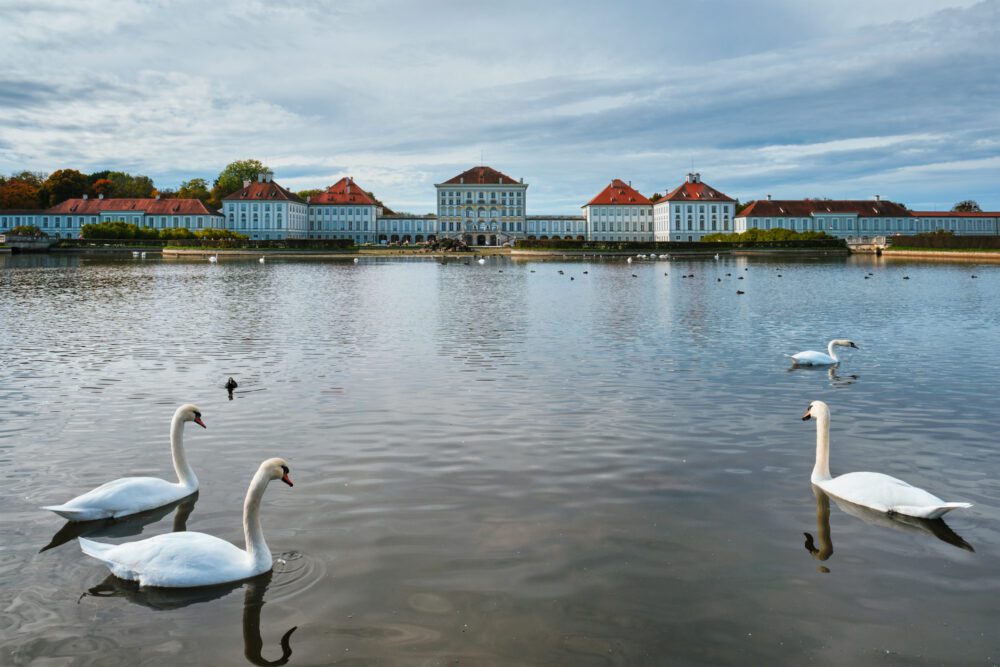
Nymphenburg Palace, a magnificent Baroque masterpiece nestled on the outskirts of Munich, is a testament to Bavaria’s rich royal heritage and architectural splendour. Commissioned by Elector Ferdinand Maria in the late 17th century as a summer residence for his wife, Nymphenburg Palace has since evolved into one of Germany’s most iconic landmarks. Surrounded by sprawling gardens and tranquil water features, the palace boasts a stunning facade adorned with ornate stucco decorations and majestic towers. Visitors can explore the opulent interiors, including the lavish State Apartments, the Gallery of Beauties adorned with portraits of Bavarian beauties, and the charming Amalienburg hunting lodge, which showcases exquisite Rococo design.
To make the most of your visit to Nymphenburg Palace, consider purchasing a combination ticket that includes access to the palace interiors as well as the extensive parklands and outlying pavilions. Plan your visit early in the day to avoid crowds and allow ample time to explore the sprawling grounds, which feature manicured lawns, picturesque ponds, and tranquil woodland trails. Be sure to visit the Marstallmuseum, located in the former royal stables, where you can marvel at a collection of magnificent carriages, sleighs, and equestrian equipment that once belonged to Bavarian royalty. Don’t forget to stop by the palace’s charming cafe or beer garden for a refreshing break and a taste of Bavarian hospitality amidst the tranquil beauty of Nymphenburg Palace.
Olympiapark
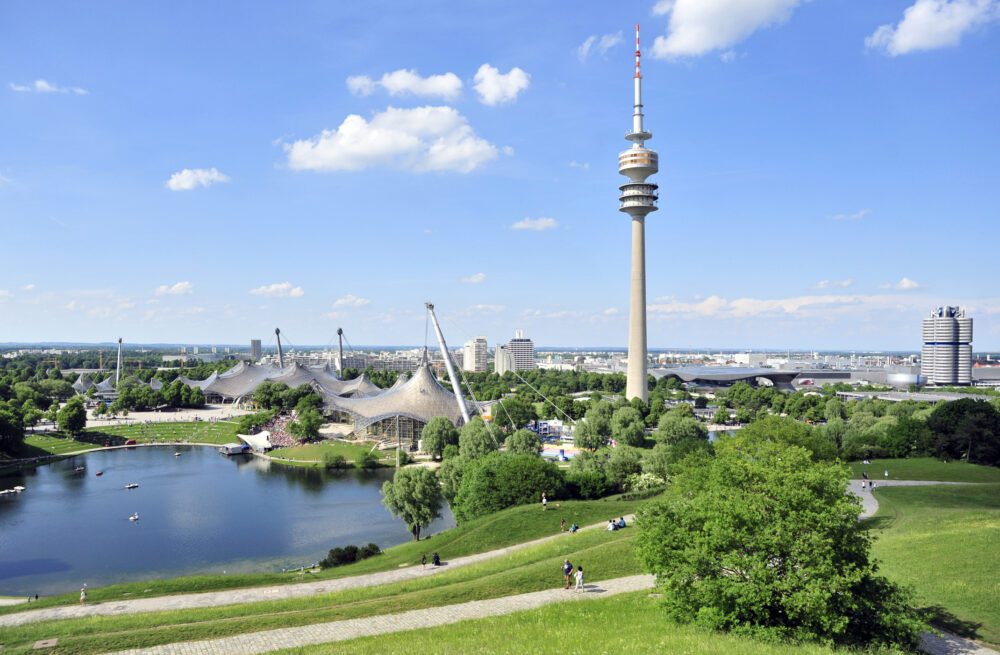
Olympiapark, a sprawling sports and leisure complex located in the heart of Munich, stands as a testament to the city’s rich history and enduring spirit of athleticism. Constructed for the 1972 Summer Olympics, Olympiapark was designed by architect Günter Behnisch and engineer Frei Otto to showcase innovative architectural and engineering techniques. Today, the park continues to attract visitors with its iconic tent-like roofs, sweeping open spaces, and state-of-the-art sporting facilities. From the towering Olympic Tower, which offers panoramic views of the city and the Bavarian Alps, to the picturesque Olympic Lake, where visitors can rent paddleboats and enjoy leisurely cruises, Olympiapark offers a myriad of attractions and activities for visitors of all ages.
Start your visit at the Olympic Tower, where you can ascend to the observation deck and take in breathtaking views of Munich’s skyline. Then, wander through the park’s landscaped gardens and lush green spaces, stopping to admire the striking architecture of the Olympic Stadium and the futuristic BMW Welt building. For sports enthusiasts, consider booking a guided tour of the stadium to learn about its history and significance as a venue for major sporting events. Alternatively, rent a bike and explore the park’s extensive network of cycling paths, which wind their way through scenic woodlands and offer a glimpse of local wildlife.
BMW Welt and Museum
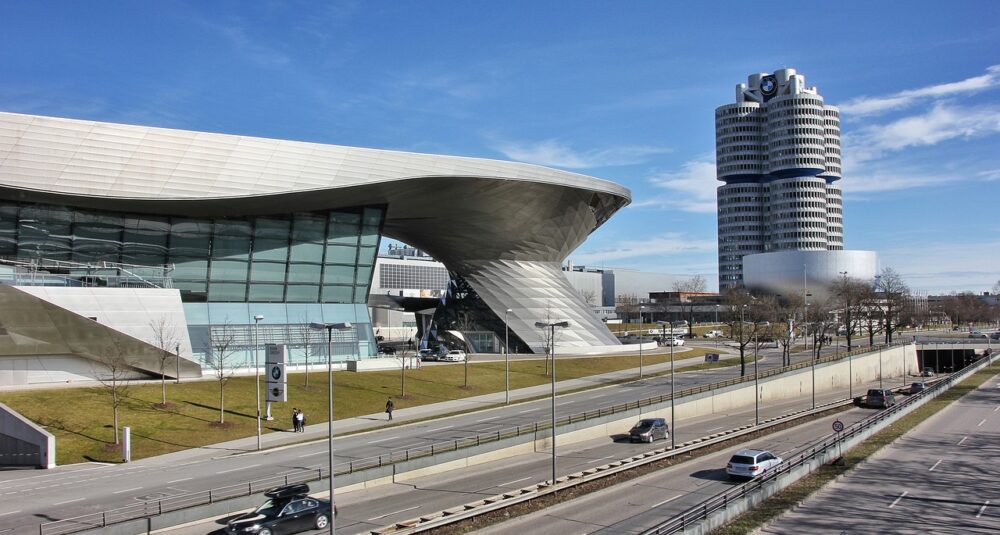
BMW Welt and Museum in Munich offer visitors a fascinating journey through the history and innovation of one of the world’s most iconic automotive brands. BMW Welt, or BMW World, serves as a modern exhibition and delivery centre where customers from around the globe can pick up their new BMW vehicles. Designed by architects Coop Himmelb(l)au, the building itself is a marvel of contemporary architecture, with its striking glass and steel facade. Inside, visitors can explore interactive exhibits that showcase BMW’s latest models, as well as learn about the company’s history and future vision. From concept cars to cutting-edge technology demonstrations, BMW Welt offers something for car enthusiasts of all ages.
Adjacent to BMW Welt is the BMW Museum, a must-visit destination for anyone interested in the evolution of automotive design and engineering. The museum’s exhibitions trace BMW’s storied past, from its origins as a manufacturer of aircraft engines to its transformation into a global leader in luxury automobiles. Visitors can admire iconic models from BMW’s history, including classic cars, motorcycles, and racing vehicles. Interactive displays and multimedia installations provide insight into BMW’s pioneering innovations in automotive technology and design. Practical tips for visitors include checking the museum’s opening hours and purchasing tickets online in advance to avoid long queues, especially during peak tourist seasons. Additionally, BMW enthusiasts may want to consider booking a guided tour for a more in-depth exploration of the museum’s extensive collection and behind-the-scenes insights into BMW’s legacy of innovation.
Hellabrunn Zoo
Founded in 1911, Munich Zoo, or Tierpark Hellabrunn, is one of the oldest zoos in Germany and a beloved destination for animal lovers of all ages. Situated on the banks of the Isar River, the zoo spans over 40 hectares of naturalistic habitats, providing a sanctuary for over 750 species from around the world. Tierpark Hellabrunn is renowned for its innovative approach to animal conservation and welfare, with exhibits designed to mimic the animals’ natural environments as closely as possible. Visitors to the zoo can explore themed areas such as the African Savannah, the Rainforest House, and the Polar World, where they can observe a diverse array of animals ranging from elephants and giraffes to tigers and penguins.
I recommend spending a full day exploring its extensive grounds and diverse exhibits. Consider starting your visit early in the morning to avoid crowds and allow plenty of time to see all the animals. Be sure to check the zoo’s website for information on feeding times, animal presentations, and special events, as well as any temporary closures or renovations. For an immersive experience, consider joining one of the zoo’s guided tours or animal encounters, where you can learn more about the animals and their habitats from knowledgeable zookeepers. And don’t forget to pack a picnic lunch to enjoy in one of the zoo’s scenic picnic areas, or stop by one of the on-site cafes for a quick bite to eat.
Dachau Concentration Camp

A visit to the Dachau Concentration Camp Memorial Site is a sobering and deeply moving experience that offers insight into one of the darkest chapters in human history. Established in 1933 by the Nazis, Dachau was one of the first concentration camps and served as a prototype for the vast network of camps that would follow. Throughout its existence, Dachau imprisoned more than 200,000 individuals, including political prisoners, Jews, and other persecuted groups, and subjected them to unimaginable suffering and brutality. Today, the memorial site serves as a poignant reminder of the atrocities committed during the Holocaust and a testament to the resilience of the human spirit in the face of adversity.
When planning your visit to the Dachau Concentration Camp Memorial Site, it’s important to approach the experience with sensitivity and respect for the victims and survivors of the Holocaust. Be prepared for an emotionally challenging experience and allow yourself time for reflection and contemplation as you explore the memorial site’s exhibits, memorials, and reconstructed barracks. Consider joining a guided tour led by experts who can provide historical context and insights into the significance of the site. Additionally, be mindful of the site’s regulations regarding photography and respectful behaviour, and refrain from engaging in loud or disruptive behaviour out of respect for the solemnity of the surroundings.
Day Trip to Neuschwanstein Castle

Embark on a fairytale journey with a day trip to Neuschwanstein Castle, a majestic fortress nestled amidst the stunning landscapes of the Bavarian Alps. Commissioned by King Ludwig II of Bavaria in the 19th century, Neuschwanstein Castle is a testament to the king’s romantic vision and fascination with medieval architecture and mythology. Perched atop a rugged hilltop overlooking the village of Hohenschwangau, the castle is a masterpiece of architectural splendour, with its towering turrets, ornate facades, and lavish interiors inspired by Wagnerian opera. Despite its fairy-tale appearance, Neuschwanstein Castle was never intended as a defensive stronghold, but rather as a private retreat for the reclusive king, who spent much of his reign overseeing its construction and transformation into a grandiose homage to Germanic legend.
Consider booking a guided tour or joining a group excursion from Munich, which typically includes round-trip transportation and skip-the-line access to the castle. Be sure to arrive early to secure tickets for the guided tour, as they often sell out quickly during peak tourist seasons. Wear comfortable shoes and be prepared for a steep uphill hike to reach the castle entrance, or opt for a horse-drawn carriage ride for a more leisurely ascent.
After touring the castle, take time to explore the surrounding area, where you’ll find scenic hiking trails, charming cafes, and souvenir shops selling local handicrafts and Bavarian delicacies. For panoramic views of Neuschwanstein Castle and the surrounding countryside, hike to the nearby Marienbrücke (Mary’s Bridge), where you’ll be treated to breathtaking vistas of the castle perched against the backdrop of the majestic Alps.
Conclusion
Munich offers an unparalleled blend of history, culture, and natural beauty that captivates visitors from around the world. From exploring iconic landmarks like Marienplatz and Nymphenburg Palace to immersing oneself in the artistic charm of the Schwabing district, Munich presents a diverse array of experiences that cater to every interest and inclination. Whether savouring traditional Bavarian cuisine at the Hofbräuhaus, delving into the wonders of science at the Deutsches Museum, or embarking on a tranquil retreat to Starnberger See, Munich’s best things to do promise an unforgettable journey filled with discovery, exploration, and inspiration.
As you bid farewell to Munich, carry with you the memories of its rich cultural heritage, its vibrant energy, and the warmth of its people. Whether you’ve spent your days marvelling at architectural marvels, indulging in culinary delights, or simply soaking in the beauty of Bavaria’s landscapes, Munich leaves an indelible mark on the hearts of all who visit.
